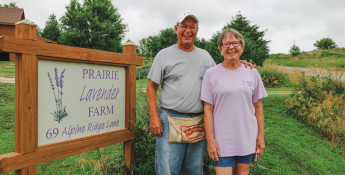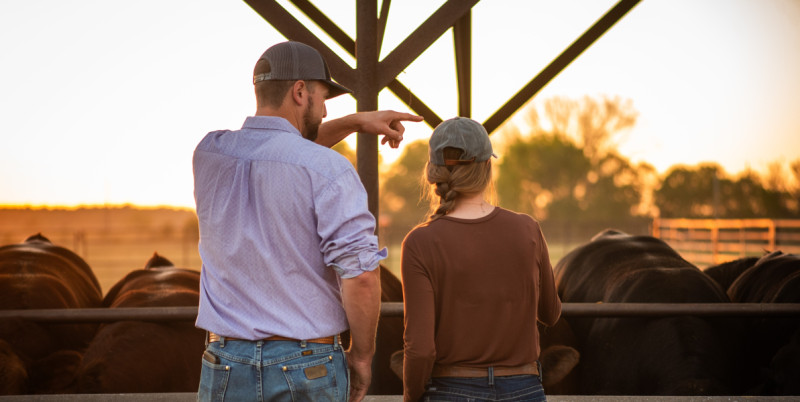By Sheridan Wimmer on July 31, 2024
How the Cattle Industry is Reducing Emissions to Meet Environmental Goals
Cattlemen and women have been and will continue to protect and provide for the land and resources they depend on
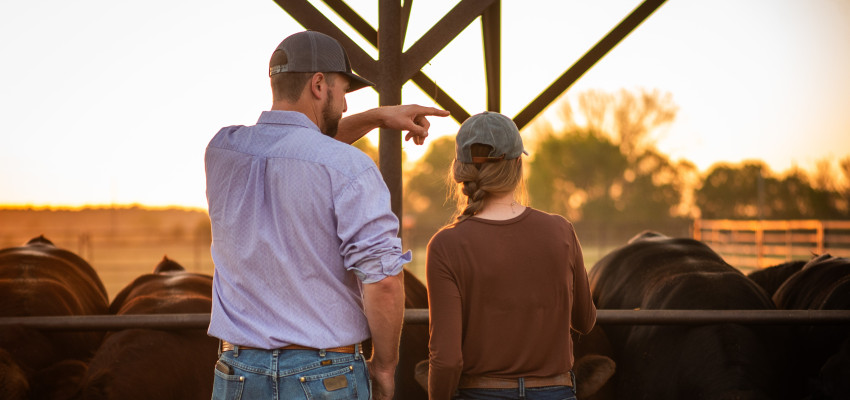
Where there are conversations about climate change, there are mentions of cattle’s digestive impact. Jokes about belching aside, cattle burps are the forefront of the agriculture industry’s production of methane. Last June, Ireland proposed culling 200,000 cows to meet its climate targets. At a time when American cattle producers are facing challenges stemming from COVID-19 and drought, a green-colored target seems to be aimed at reducing herds. But is that the answer to meeting our own climate goals?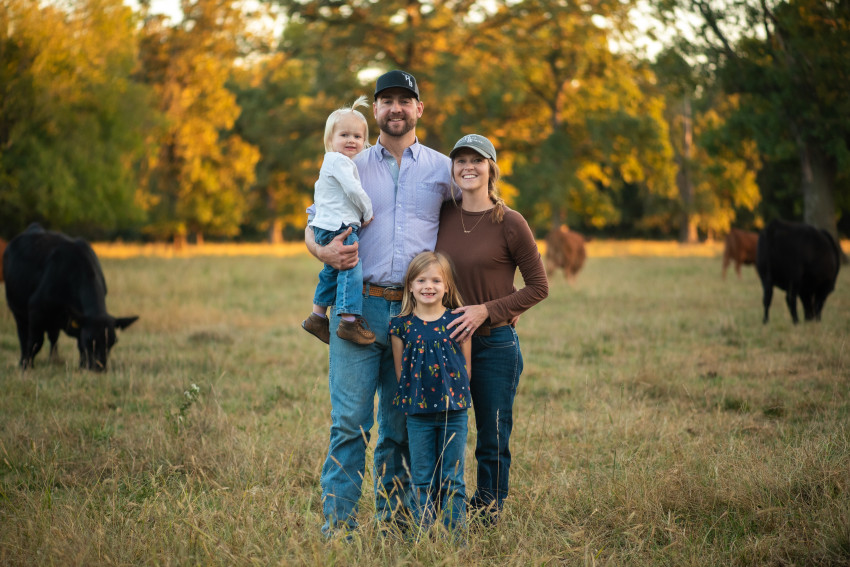
Methane Burps
Cattle burp, just like we sometimes do (excuse us). And when they burp, methane is released into the atmosphere. It’s a fact of the ruminant animal and its enteric fermentation — the digestive process of converting complex carbs and sugars into simple molecules for absorption into the bloodstream. Methane is released and traps heat in the atmosphere, creating the need to research ways to minimize the amount released. However, even though methane is an intense gas, it’s also short-lived. Carbon dioxide stays in the atmosphere for up to 1,000 years, whereas methane’s life is much shorter.
“According to the science, methane is released when cows belch but is only in the atmosphere for about 10 years,” Mary Soukup, the director of marketing for Innovative Livestock Services, a cattle feeding and farming company in Kansas and Nebraska, says. “It does not stay in the atmosphere as long as other greenhouse gases.”
The methane then breaks down and converts back to carbon dioxide. Once converted, plants perform photosynthesis, and that carbon then goes back into cellulose. Cattle eat the grass, and the process, which is called the biogenic carbon cycle, continues.
Methane has a relatively short life, but government and ranchers alike are trying to make it even shorter through federal initiatives, voluntary production practices and research to learn more.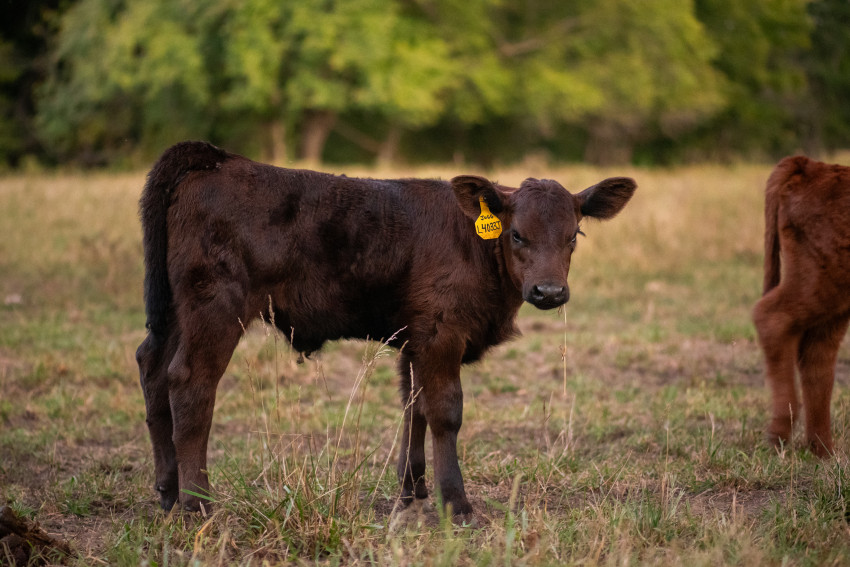
Government Goals
President Joe Biden has made the “climate crisis” — a term coined by his administration — a top priority during his tenure in the White House. He created the National Climate Task Force to work on climate goals, such as reducing U.S. greenhouse gas emissions 50 to 52 percent below 2005 levels by 2030; reaching 100 percent carbon pollution-free electricity by 2035; and achieving a net-zero emissions economy by 2050.
“Net zero means our emissions are balanced by our sequestration,” says Logan Thompson, a sustainable grazing specialist in Kansas State University’s Department of Animal Sciences and Industry.
According to the Environmental Protection Agency, the transportation industry tops the list of greenhouse gas emissions by economic sector at 28 percent according to the most recent data from 2021. Agriculture, as an industry, contributes the least amount at 10 percent. Cattle and other livestock account for 4 percent of total U.S. emissions, and beef specifically accounts for just 2 percent. Although the lowest contributor, ranchers and the government continue to find solutions to reduce emissions.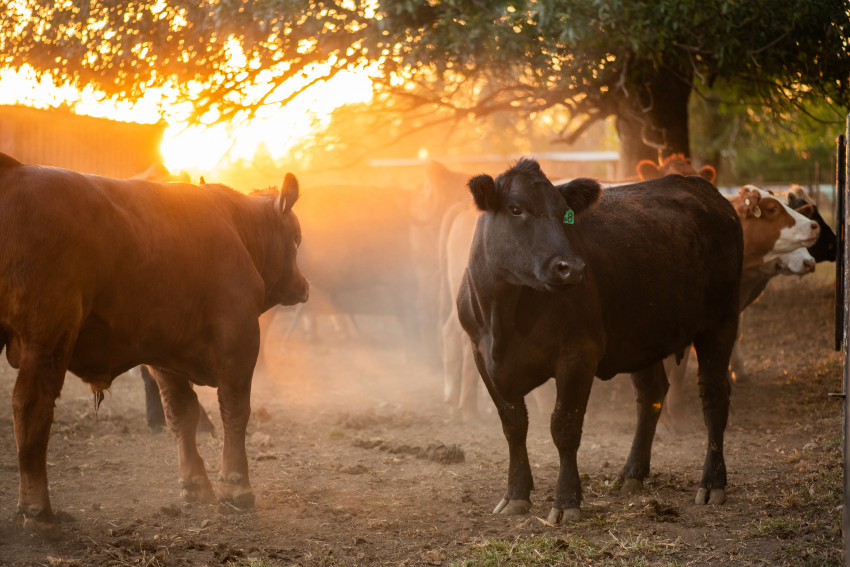
In addition to the electric vehicle push, the Biden administration set its sights on agriculture to create programs for emission reductions. When it comes to beef cattle specifically, an initiative is set to create market opportunities for beef and bison producers who utilize climate-smart grazing and land management practices, which many beef producers would argue they’re already doing.
“A lot of ranchers and producers across all segments of our industry are asking more questions related to climate, but they have always been stewards of their own land,” Thompson says. “It’s the framing around the conversation that’s changed.”
The National Cattlemen’s Beef Association (NCBA), of its own volition, set sustainability goals at its 2021 convention — one of which is to reach climate neutrality of U.S. cattle production by 2040. These goals were made by grassroots, producer-led discussions to take into consideration the beef producer’s economic sustainability — because without financial stability in the cattle industry, environmental consciousness can’t be achieved.
“It’s the nature of American agriculture to continue to strive for better yields and lower input costs,” Brandi Buzzard, a rancher in Anderson County and spokesperson on beef production, says. “Those things don’t sound like sustainability, but they are because if you’re not profitable, you are not sustainable.”
“Cattle producers are America’s original conservationists,” NCBA Chief Counsel Mary-Thomas Hart says. “Cattle production provides such a significant environmental benefit. We think cattle production and ruminant grazing are a key part in conserving land and water resources. We have a good story to tell.”
Climate-Smart Practices: Rotational Grazing
While pen is on paper with government initiatives, many in the cattle industry are sharing their operations’ sustainability stories, including how they’ve been incorporating climate-smart practices for some time.
“I think a lot of us beef producers were already doing climate-friendly things, but we’re better about talking about them now,” Buzzard says. “I talk a lot about rotational grazing, but that’s not a new practice to ranchers.”
Thompson, too, says rotational grazing has been practiced in some iteration for approximately 50 years.
“Continuous grazing is what it sounds like,” Thompson says. “You have a pasture, and you leave your cows there for an entire year to graze. That can give short-term results in improvements in animal performance, but over the long term, continuous grazing can lead to negative effects because those really good grass species can be overgrazed. Rotational grazing is where cattle are moved across a pasture in intervals to allow grasses to recover from grazing. It keeps our soils intact, keeps soil microbes functioning and keeps plants in better shape.”
“We try to get as many grazing days out of our pastures as we can,” Buzzard says. “Ideally, we have one pasture that we don’t graze going into the fall. That pasture would grow great nutrients for our cattle, then go dormant. In January, we would put our cows on that dried, dormant, but still highly nutritious grass.”
Recent research has shown with proper grazing management, cattle are helping sequester more soil carbon concentrations than non-grazed systems.
Climate-Smart Practices: Upcyclers
In Kansas there are more cows than people, and the state ranks behind only Texas and Nebraska in number of cattle at 6.5 million head. Where a fraction of the land in the state isn’t suited for cultivation, cattle roam. The Great Plains and Flint Hills of Kansas are an ideal setting for cattle. Historically, these areas saw large herds of bison and elk, and while the populations of those species have decreased, cattle have become the new purveyors of trimmed grass and fertilized soil.
About 29 percent of land in the U.S. can’t support the cultivation of crops, but cattle are there to graze on its native plants.
Soukup says cattle grazing also helps manage native grasses and can even prevent wildfires.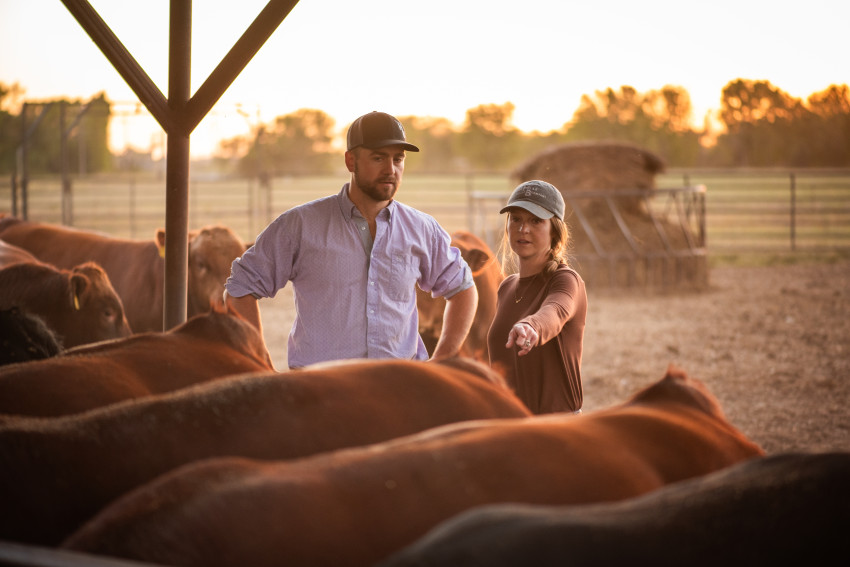
“When I’m not at work, I’m often found working with my family on our farm and ranch,” Soukup says. “And I'm a firm believer that the absolute best caretakers of the natural land around us are cows and calves who are out grazing on land that is unsuitable for anything else. They are taking what would otherwise be waste, choking out growth of native grasses, and turning that into the highest-quality, most nutritious, best-tasting protein on the planet.”
Not only do cattle eat where humans can’t cultivate, they also eat what humans can’t. Approximately 90 percent of what cattle eat can’t be consumed by humans. Their unique, four-compartment digestive system transforms cellulose into protein.
“We can’t eat cellulosic material, but cattle can,” Buzzard says. “Cattle convert cellulosic carbohydrates into protein for human consumption. They’re the ultimate upcyclers.”
From sunflower hulls to pressed grape skins, cattle also help keep food waste out of landfills.
“Cattle eat a lot of byproducts and help reduce waste,” Buzzard says. “In Kansas, dried distillers grain (or DDG) is a byproduct of ethanol production — made from corn — and livestock producers have been using it for years in their cattle rations. It’s a great source of protein, and it’s affordable for us to feed. In California, cattle will eat pressed grape skins that were used in wine production. If we didn't have cattle eating those, they would just go to waste and sit in a landfill, emitting greenhouse gases.”
Research in feeding seaweed to cattle has become a new trend in reducing methane emissions. The problem for Kansas producers is there isn’t a lot of seaweed in our landlocked state.
“Seaweed appears to be promising, especially in feedlots where it can be fed pretty precisely,” Thompson says. “It does reduce emissions up to 80 percent, so it’s certainly viable. The issue there is how do you scale that across the entire industry? It would be challenging for our producers to store seaweed in a way that keeps it active. But for producers on the coasts, it’s an interesting option.”
Whether ranchers are grazing their cattle, have them on a nutritional feed ration or provide them with byproducts, feed efficiency is an important factor in sustainability.
“We’re always trying to improve, and that includes feed research,” Buzzard says. “Improved feed efficiency — or how much weight gain an animal can have per day — is relative to sustainability because you’re putting in fewer inputs to get more meat.”
Feedlot Footprints
The beef value chain is as complex as the climate conversation. The factors related to the beef industry’s carbon emissions vary based on the type of cattle operation, what diet they’re fed and the rancher’s land management plan.
One segment of the beef industry is often painted with a broad negative brush, but science has shown feedlots are not as substantial of a contributor of greenhouse gas emissions as portrayed.
“There’s this image of how feedlots are detrimental to the environment,” Thompson says. “But in reality, science has shown the feedlot sector is the most efficient sector in our industry, both in terms of performance and greenhouse gas emissions. Our largest footprint is our cow-calf ranchers, which surprises people. But when you think about what else those ranchers are providing, they’re providing a lot of other ecosystem services. They’re improving the soil health, they’re providing wildlife habitat, they’re improving water filtration and quality.”
Feedlots produce approximately 17 percent of the greenhouse gas emissions in the beef value chain that occur prior to the animal being harvested, according to research by Oklahoma State University. While the cow-calf sector is the highest producer of greenhouse gases, the nuance is there are more animals in this phase, and they consume more forages, which increases methane released per animal.
“We recognize that our environmental footprint is a key component of the sustainability of our operations, and that’s one reason why we participate in the U.S. Roundtable for Sustainable Beef,” Soukup says.
The U.S. Roundtable for Sustainable Beef was developed to advance, support and communicate continuous improvements in sustainability of the U.S. beef value chain. Members are individuals, organizations and associations who are actively engaged in the ownership and management of cattle used to produce beef.
“The roundtable establishes targets and metrics on sustainability for every segment of the beef supply chain, from the cow-calf to the ranch and sale barns and packers and processors and even to the retail sector,” Soukup says. “The organization is now focused heavily on outreach within the industry — developing tools and resources for producers and exploring how to measure progress toward the metrics and targets that have been established.”
You can’t find solutions to greenhouse gas emissions without measurements. The beef industry is finding its footing in capturing relevant data to measure these climate-smart technologies to quantify improvements.
“You can’t manage what you don’t measure,” Soukup says. “We are continuously monitoring important energy and water usage and more — always looking for opportunities to produce more beef using fewer inputs. Cattle emit methane. We can’t change that. But there are things we can do that allow us to be better managers and improve our overall efficiency, which is not only good for our carbon footprint and the environment, but it’s also good for our people, it’s good for our business, and ultimately, it’s good for the consumer.”
Farming Carbon Credits
Carbon credits are the newest commodity to hit the market. Currently, most carbon market programs are voluntary and are outside of regulatory control. Farmers and ranchers can sell carbon credits by adopting carbon-reducing management practices (think no-till and cover crops for farmers and grazing management and manure management for ranchers) to companies that want to meet sustainability standards or goals without making changes to their own emissions. These exchanges are referred to as “offsets.”
Determining the yield on carbon credits may take a bit of time to capture, but the industry is listening.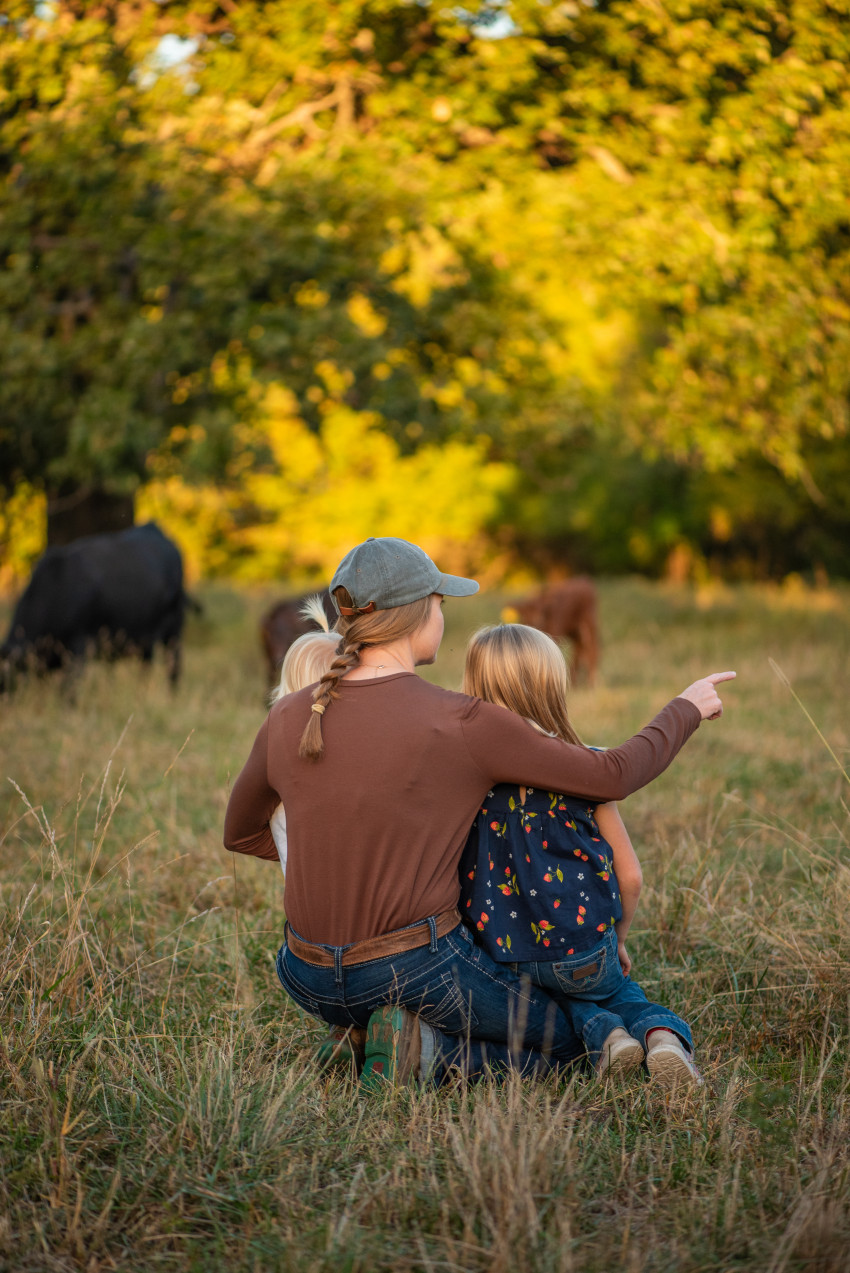
“There’s a lot of discovery yet that needs to happen in this space,” Soukup says. “There needs to be accurate and verified accounting to ensure there is not double counting of carbon credits, and there needs to be work done in developing a marketplace for these credits. Valuing each of the credits needs to be done in a fair and equitable way.”
More than an Environmental Impact
Those 6.5 million head of cattle in Kansas generate $9 billion in cash receipts year over year. It is the largest sector in the Kansas agriculture industry.
“Cattle are crucial to our rural economy,” Thompson says. “In Kansas, our economy would look incredibly different if it weren’t for beef and agriculture. Even if we were to eliminate all cattle in the U.S., we would only reduce our total greenhouse gas emissions by 2.6 percent. That wouldn’t get us to our goal. And if we were to do that, we would not meet the dietary needs of our society.”
Thompson does, however, think the beef industry can continue to make improvements through efficiencies in production methods.
“The goals set by the Biden administration are very complex, but I think our industry can meet the methane reduction pledge through improvements in dietary quality and how we manage our landscapes.”
The Kansas beef industry impacts not only the economy, but also future generations.
“We have this ranch, and we want to pass it down to our daughters,” Buzzard says. “In order for us to have a ranch to pass down, we have to be profitable, and we have to take care of the land.”
Soukup, also a rancher in Kansas with two young kids, cares about the environmental impact her line of business has on the future.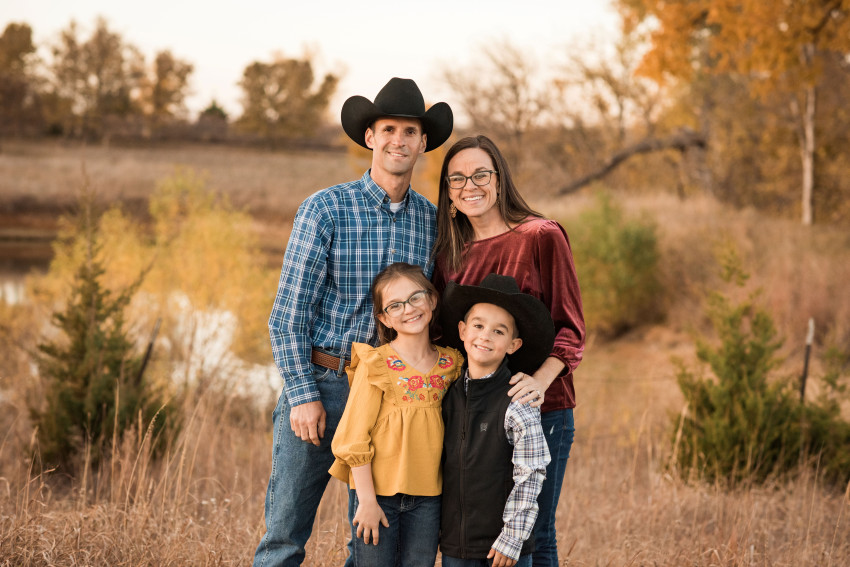
“I have a 9-year-old and a 7-year-old at home,” Soukup says. “I want them to have the opportunity to continue managing this land and working in this industry when they’re 40 years old. And when they’re 80 years old, I want them to be able to pass it on to their kids and grandkids.”
The public is divided when it comes to Biden’s efforts for climate change. According to the Pew Research Center, 49 percent of U.S. adults say the policies are taking the country in the right direction; 47 percent think they’re heading in the wrong direction. With the election coming this November, climate goals set by the government may change depending on the outcome of America’s vote for its next leader. What won’t change is the dedication of America’s farmers and ranchers to leave things better than what they were given — give or take a few cow burps.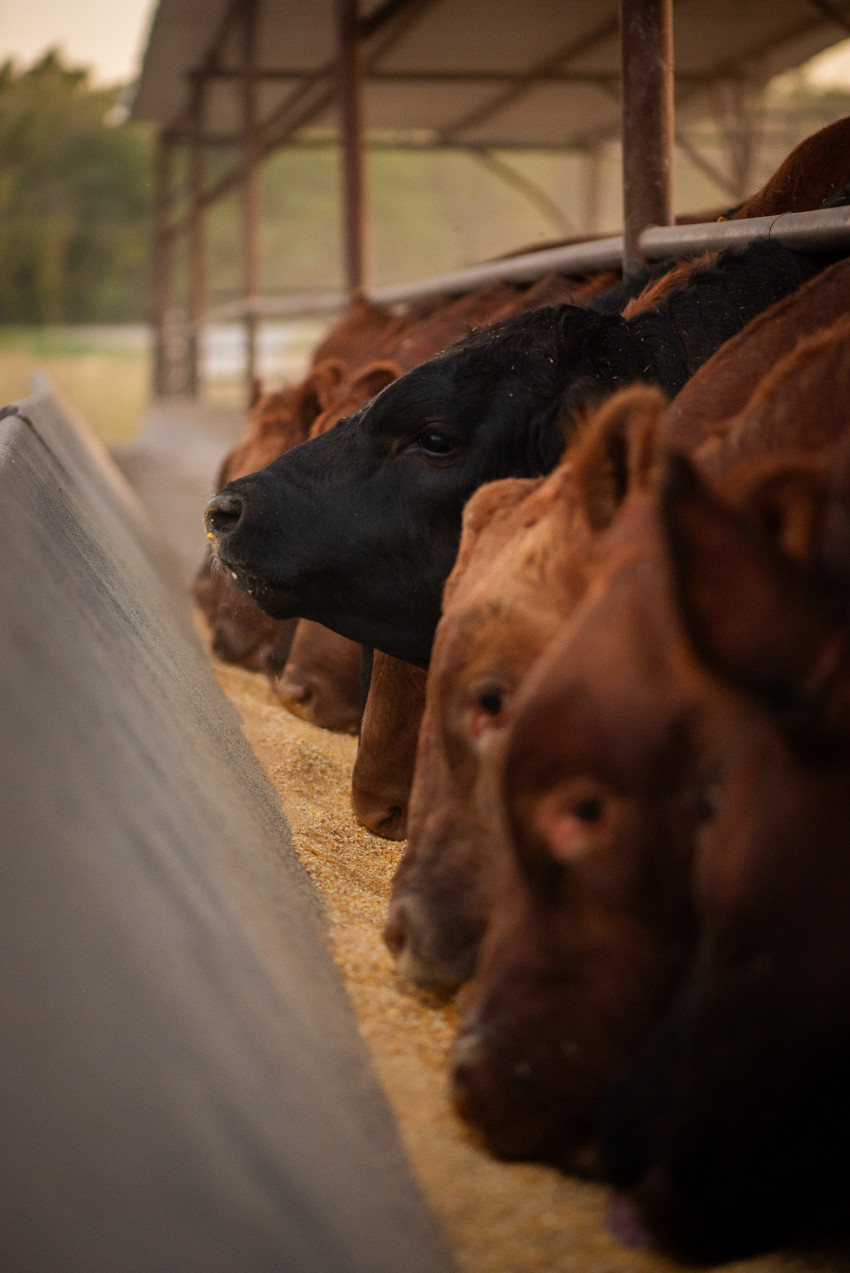
There are many aspects to the Biden Administration’s goals on climate change. Learn about the agriculture solutions at www.usda.gov/climate-solutions.

